– Welcome everyone to Wednesday Nite at the Lab, I’m Tom Zinnen, I work here at the UW-Madison Biotechnology Center, but I also work for the Division of Extension here at UW-Madison, which used to be called the Division of Cooperative Extension, and on behalf of those folks and our other co-organizers, Wisconsin Public Television, the Wisconsin Alumni Association, and the UW-Madison Science Alliance, thanks again for coming to Wednesday Nite at the Lab. We do this every Wednesday night, 50 times a year. Tonight, it’s my great pleasure to introduce to you Matthew Edney, he’s at the University of Southern Maine, and he’s also here at UW-Madison. He will tell you more about that joint project there. He was born in the United Kingdom, in London’s SW19, otherwise known as Wimbledon, which is where they played cricket…
croquet–
– One of them.
– Tennis, okay. I think it’s both long tennis and croquet club.
He went to high school at Kingston Grammar School, which was founded in 1585 during the reign of Elizabeth I.
He went to University College London for his undergrad and studied geography and land surveying. Then he came here to the University of Wisconsin-Madison to get his master’s degree in cartography. He stayed to get his PhD in geography. And then from here, he went to SUNY Binghamton on Long Island, and then from–
– Partly.
– Not on Long Island.
(people chattering)
– You need a map.
– Stony?- Stony Brook, I misheard you.
I apologize.
– Your geography is a little missing.
– So much for geography.
(all chuckling)
– I have made a mistake.
Wherever Binghamton is, he went from there to the University of Southern Maine, which as he said to me, is in Boatland. And then I thought, where’s Boatland? And then he said it again, and it’s in Portland.
(audience chuckling)
So my hearing and my geography aren’t very good tonight. This is one of the great, great things here about UW-Madison and the History of Cartography Project. His specific title is, “Is The World’s Oldest Map Really A Map?” This is personal to me, because I am a neighbor of the folks who started this, David Woodward, who died in 2004, and this is Ros Woodward. She’s still my neighbor, and I’ve been trying to get somebody from this project for the last 10 or 12 years, and it’s a great pleasure to be able to welcome Matthew Edney to Wednesday Nite at the Lab.
(audience applauding)
– Right, so what I want to do today is talk very briefly about the History of Cartography Project, but rather than expound at length about new ways of looking at maps, I thought I’d just give you an example. And it’s the kind of work that’s been very much prompted by the books of the History of Cartography Project and everything that’s being accomplished by that.
The project in itself was founded by these two fellows, Brian Harley and David Woodward. They collaborated around about the time of the American– the bicentennial of the Declaration of Independence. And a bit thereafter, in 1977, when David was visiting Brian in southwestern England, David, well Brian says, “We need a four-volume history “of the mapping of America.” Thinking about the work they’d done together. And David shot back, “No, “we need a four-volume history of cartography.”
And so when they began this plan, four volumes totaling one million words, all to be done by 1992.
And the Columbus quincentennial, that was the idea.
But the thing is that they started asking their authors, their contributors, to think, not just about how maps are made, and the techniques and the science and the instrumentation and processes, but also how maps were used, and why they were used and who by and in which cultures.
And when you start asking those questions, thinking about maps as instruments for social institutions and as cultural documents that carry meanings, not just location, but some kind of symbolic significance, then the subject matter just explodes.
So we have, finally, Volume One published in 1987, dealing with mapping in prehistoric, classical, medieval Europe, Mediterranean worlds.
Volume Two, well, they also realized that they needed to add a couple more volumes quite quickly. And they thought, let’s add a volume number two, make it number two, on traditional Asian mapping.
And they said– And I distinctly remember when I first met Brian in 1983, and he said, “Yeah, we just decided to do this. “It’s going to be fast and small, “because not much has been done on Asian mapping. And pretty much, we end up with three books, each bigger than Volume One, which is already bigger than the allocated size, which then leads us into Volume Three, the European Renaissance, which was David’s own volume. So my first job when I took over the project was to wrap this project up and get it through the press.
This one clocks in at 1.3 million words all by itself,
just because the fun information that is being gathered when you start looking at maps in interesting ways means you just can’t cut it out. You got to say it.
For various reasons, which are too long to go into, Volume Six, on the 20th century, came out in 2015. Mostly because Mark Monmonier, the editor, is a Stakhanovite, if you know that phrase, workhorse, he just will push that one through.
Volume Four, which, I’m co-editing with Mary Pedley from Michigan, is coming out, they say in November 2019.
And that will leave just Volume Five on the 19th century to be prepared, and we hope– Well, I’m saying 2023 there. We’re going to spend the next two days revisiting the actual workflow on this project, so, to figure out who’s going to do all the fact and reference checking and the editing and all the rest of it and when. So we’ll figure out when that comes out.
One of my favorite maps, from the 18th century. So we will have a launch party for Volume Four at some point in the spring semester, when we know we will physically have books that people can use. Though these books are a million words. They take time to get through the press. Oh, yes, and I’ve persuaded the University of Chicago Press to put all of these books online for free access.
So running up through December, we’ve had 3.35 million downloads of chapters from one through three, and Volume Six went online in July, for free access.
That is a different structure, so it doesn’t mean much, to say chapter downloads, but that’s being downloaded. And four and five will be online as well, two to three years after print publication. So it’s having an effect.
So, my case study then, for the rest of the talk,
is about this image, and why it’s being considered the world’s oldest map, and why it may not be.
So if you ask most people who deal with maps and map history, what is the oldest world map, they’re going to say this thing. This is from Volume One of the History of Cartography.
And you find it in Casey’s philosophical study of the representation of place, and you find it in a picture of the original mural
in an account of reinterpretation of Babylonian mapping, even though that mapping takes place several millennia later than this image.
This is a mural from a place called atalhyk… Have I pronounced that right? …in south-central Turkey. Here it is on a nice Google map. It’s a very flat part of Anatolia. This is looking north from the tell of atalhyk, looking north to the mountains, and then this is from the north, looking at the eastern mound. Sorry, this is going to be from the west– No, is it from the east, looking to the eastern mound. So it’s a classic sort of ancient settlement where the settlement over time has built up the ground and so you’re left with this mound rising up above the plain.
The kind of things that archeologists love digging in. From above, you can see the main eastern mound with the small western mound. There are a couple of structures there which are hiding, current excavations and the museum.
And here’s an aerial, a bleak aerial view. Now, this site was first dug by an archeologist called James Mellaart, working for the British Institute of Archeology in Ankara, and he did a preliminary dig in 1958, and then did more through the early ’60s.
Some scandal, which to be honest, I don’t understand, ceased work, but Ian Hodder, a very famous modern archeologist, began work there again in 1993, and is still working, proceeding apace.
This is what the excavations looked like under Mellaart, and you can see the variety of walls made out of clay brick.
All of the walls seem to– All the spaces seem to be private structures.
There are no large public buildings, no large spaces, and there are no roads,
for reasons we’ll come to.
Overall, it has 18 different layers, ranging from about 9 1/2 thousand years ago, to about 7 1/2 thousand years ago. So this place was occupied for about 2,000 years. Yes, I can do my math.
And at any one time, the estimate is it had between 5,000 and 7,000 people living there. So this is a Neolithic site, which means it’s still Stone Age.
Mostly it seems to have been a central location from which people went out to farm.
And beyond that, I’m not an archeologist, so I can’t get into the economics of this place. This is part of the recent excavations under Hodder, and you can see several layers here. And again, the way that the houses, they’re also built on top of each other.
This is an element of one portion of the archeological plan of what Mellaart’s team dug in 1963, and you can see, in crosshatched lines, the walls around each of these little houses, and some of the subdivisions within the houses.
Now, the museum, they’ve done a number of reconstructions of what the rooms would have looked like.
You’ll see that there’s a ladder. Access was through the roof. There was a hatch in the roof. You went in and out through the ladder. You can see there’s a lot of light coming in from the side, this is because, to show it off in the museum, they’ve left one side open. But in reality, all of these little houses are completely enclosed.
There’s no chimney, even, for the little stove oven.
So it would have been very smoky, very enclosed, very dark, except for whatever light you had.
Here’s another one. There are lots of bull’s heads around in this site. There are platforms on which people presumably slept, and so forth.
So this is one of the many artist’s impressions of what this city looked like, this town looked like. And its height, you’ll notice that people are moving around on top of the roofs of the houses, the rooms.
Very interesting place.
Keep that image in mind.
Now, in ’63, Mellaart’s team excavated this level seven of 18, which they dated to about 8,000 years before present.
And in room 14, they found
painted on the walls,
this very difficult to see mural.
Here it is, preserved, taken out and preserved in the museum, and you can see a series of red little boxes, and there’s something else above it. So let’s go to a redrawing to make it clearer.
So this is the redrawing of the mural, sort of trying to recreate what it would have looked like in the original setting, about 8,000 years ago.
And you see, it’s a number of squares in red, about 80 of them, forming a grid pattern in the lower register, and in the upper register, there’s a strange double-peaked thing,
however Mellaart described it, above.
And this is what has been interpreted as being a map.
Mellaart said, now,
he admits, by the time he starts writing this, the interpretation’s always subjective. But it seems, he says, likely, that the 80 or more squares drawn along the base in rows or terraces, represent a view of a town. Now, one has only to compare figure 11 with plate 6A to see that this is indeed a possibility. And here is plate 6A and figure 11, compared. Each house has its own walls and the internal divisions in the drawing remind one of the platforms, et cetera, in the plan. And one is struck by the variations and irregularities in the drawing of the individual houses.
Therefore, he concludes, in our opinion, this is a representation of a Neolithic town, probably atalhyk itself. The houses in which rise in exactly the same manner as is shown in the painting, in the mural.
And then there’s this thing at the top,
which Mellaart identified as being a profile view of one of the mountains that you can see from the top of atalhyk itself.
Twin cones mark the position of Konya in the northwest, twin peaks crown the might mass of Karadag, and in the far distance, one sees on a clear day, the double cone of Hasan Dag, then an active volcano and the highest mountain in the region.
Here’s a picture of Hasan Dag, or Dagi.
The G has got that little upside down circumflex, that makes the president of Turkey called Erdo-wan, not Erdo-gan, anyway, minor point. So here it is, and Mellaart thought that the obsidian that was found at the site of atalhyk came from this volcano.
Hasan Dag is about 120 miles from atalhyk.
And if you were walking it today with a physically larger body, use longer strides, on metal roads, over bridges, it would still take you 38, 39 hours, at least as Google calculates it. So clearly, a long distance away from atalhyk itself.
Mellaart continues arguing that Hasan Dag was the source of the obsidian from which these Neolithic peoples made tools and weapons, mirrors, and claims it’s the commodity that they then exported. Later archeologists have doubted the degree of economic activity, but again, this is not, that’s not my area of expertise, so I’m not going to get into that. Here’s one of the obsidian mirrors that was found at the site.
This brings one to the spots on the mountain, the objects spurting out of the right-hand top, the cloud of dots and strokes above and to the right of it, and the lines extending from the base of the mountain. All these, says Mellaart, can be interpreted as the usual phenomena of a volcanic eruption. The rain of glowing volcanic bombs and red-hot rocks, the cloud of glowing particles above it, and perhaps tongues of lava welling up from vents near the base of the mountain. Not that Hasan Dag has any such vents.
Sir Mellaart is basically arguing then that this is a volcano, and that this is particularly Hasan Dag, which is known to have erupted during the second millennium BC, and therefore, it’s certainly a possibility, he says, that this is a highly relevant subject to be recorded in a shrine. Now, I’m just going to get ahead of myself here and say, for Mellaart is really interesting. It’s a shrine because it’s a mural, but then the mural is justified because the room is a shrine.
There’s a certain circularity to his logic.
So to all recap, Mellaart’s argument is that the squares of the image look like the architect’s own plans of this site. And so therefore, these squares must themselves form a plan of the town itself. It looks like a map, therefore, it is a map. The upper register is a realistic image of an erupting volcano, and therefore, made about 8,000 BP, this is clearly the oldest urban plan, the oldest scale map. And it has been widely accepted as such.
But is it a map? I should actually say, David Hackett Fisher, back in the ’60s, wrote a book called “Historian’s Fallacies,” and one of the first fallacies was, don’t trust anybody who puts a question, who asks a question in the title, because what they really mean is the antithesis of the question. It’s a very simple city logical fallacy. So I lay claim to that fault.
Stephanie Meece, then a grad student at Cambridge,
suggested in a paper on Anatolian studies in 2006,
that this is not a map.
And it’s fascinating, because Meece bases her argument in large part upon the kind of interpretations that the History of Cartography Project has been promoting and facilitating, among other scholars across the humanities and social sciences. Now, I’m drawing completely on her work, so none of this is on my own research. If I get into my own research, I’ll go off on tangents, and you’ll be here forever, ’cause it’s such a cool topic that I do. But I’ll stick on this.
So, first part of Meece’s argument was that originally, if you read the accounts of the dig very carefully, originally, Mellaart and his team thought that this was a geometric pattern and a leopard skin, that I’ll explain in a minute. And only later, as the cartographers are actually drawing up the plan of the excavations in 1963, do they say, huh, it’s just like this map, therefore, the mural is a map.
One of the key issues here is there is a basic principle of interpretation. It’s very hard, in a prehistoric context, to say something meaningful about an image, because we have no context in which to put it. We don’t have an archival record that will hint or explain what an image means and what it’s about. Instead, we have to put each image into context of all the other images around the site,
in this case, works by the same people of the same community.
And if you look across the entire site of atalhyk, you find repeated geometrical patterns,
as a basic form of decoration, ritualistic symbol– who knows what it’s for– but there’s lots of geometric patterns that are repeated. They cover large areas, and this one’s at least 10-foot wide.
The designs, like the one which is on the left-hand wall of this reconstruction, there are very key elements in all these museum-based reconstructions at the site.
Here is a mural interpreted as a human figure
running across it in sort of gray, with a leopard skin. Leopards are a common motif at the site.
Maybe along with the bull’s head, some kind of a totem, some kind of sacred animal.
Whatever it is, there’s a lot of leopards depicted, either in mural form, or in this case, in some kind of bas-relief.
So, following, for Meece, following a basic principle of ethnographic interpretation, when you’re dealing with prehistoric materials,
the mural seems to be just one more of these repeated geometrical patterns with a leopard skin put on top, or maybe the leopard skin was there first, and they put the geometric patterns below. Either way. And I’ve just got to break off here for a great example of mansplaining. When I was looking for a picture of a leopard and atalhyk, I came across this website, in which some dude, well, Tristan “Stringy” Carter– he was an expert on chipped stone tool– is seen as being the specialist who say, no, this is just a leopard skin, rather than giving credit to Stephanie Meece, who was the arguer, who creates the whole argument in questioning whether this was a map or not. So this is sort of a typical academic thing, unfortunately.
So Meece’s second argument is that the reference to Hasan Dag is wrong. So subsequently, they did work on the obsidian found at atalhyk, and they discovered that that obsidian does not come from Hasan Dag. Hasan Dag’s obsidian is far too brittle to be used for shaping into tools or mirrors, even.
Also, when Meece was writing, it seemed that the last time that the volcano had erupted was at least 1,500 years before the mural was painted, which would have put it right at the beginning of occupation of the site, 9500 BP.
And then there’s this problem. Here’s the mural with the supposed volcano, and here’s a side view of Hasan Dag.
And you can see that the higher peak is at the right, except when you actually look at Hasan Dag from atalhyk, the high peak is on the left. So it’s not really, in that case, a truly realistic image.
So, the volcano is the wrong way round. The obsidian is wrong, it’s not a place, necessarily, of great economic/religious significance to the Neolithic people at atalhyk, so is this leopard, is this design in the upper register really a realistic view of the volcano, and Meece would say, no, it’s leopard.
And then we come to the point which is really the principle of the History of Cartography Project,
which is to try to understand images based on the cultures that produced them, not upon our modern understandings of what maps are or what maps should be.
And here, Meece starts arguing that– Well, first of all, she argues a very good point. Why should people 8,000 years ago make a map of their town in a style that’s used only by modern-day archeologists?
And the modern-day archeological plans don’t have those roofs, they just have the remains of the walls, how would you show the plan, if you were a resident there, how would you show the city if you were a resident there, with all the roofs intact. You would think more of it as a, as a different spatial conception involved.
And why, for that matter, would a small town of five to 7,000 people, need a map at all?
This is like early modern European cities, which are called walking cities, where they have far more people, but very small, very cramped, and is very easy to find your way around. And until, really, the 18th century, there are very few detailed plans of European cities even. Lots of views– I’ll show you one later– but no detailed plans.
The key issue here, and the issue that runs throughout the history of cartography, is that not only indigenous peoples and prehistoric peoples but modern peoples as well have made maps in various ways for various purposes.
Even today, we have this idea that all maps are based on observation and surveying, but many are not. So the question is, why should we presume that people 8,000 years ago used modern methods or at least adhered to a modern sensibility of direct relationship of the map to the world.
And we can show that there’s no necessary direct relationship in all sorts of images. Here’s one of Bharat Mata, Mother India, from a 1958 textbook, where you see the outline of South Asia superimposed with a Hindu goddess.
Or this one, anybody have a clue what this is a map of?
Anyone want to guess?
Don’t worry, my students are always stumped when I show them this one. If I showed you the next one in the atlas, you’d be really stumped. This is of the Mediterranean.
It’s from the 12th-century, so-called Book of Curiosities, now at the Bodleian, and it’s a wonderful document. The following map is actually a map of the Indian Ocean, and it looks almost identical.
(audience laughing)
All those circles are just labeled, island.
(audience laughing)
Not because the, well– He was a retired merchant who in his retirement decided to get the education that the nobles had, and so he taught himself, or was taught geography and astronomy. It’s not because they didn’t know what the islands were or where they were or what they were called, it’s that there’s a certain philosophical approach that dictated it’s more important to show the essence of a place rather than to show the precise geographical outline.
And so, in this case, the two rectangles, one is Crete, one is Sicily.
They’re actually discussed, and all the place names around the circumference are discussed. And if you go to the Bodleian website, you can find a wonderful website,
detailed website, which has these images superimposed with translations, and it’s just an incredible resource that I have fun with.
Or this map.
This is a map of place from Arnhem Land in Northern Territories in Australia.
It is a– It is the kind of work produced within certain aboriginal societies for their own internal consumption.
I can show this one, because this was made to be given to a modern art museum at Deakin University.
So, it’s legitimate for me to use this without constantly seeking permission from the artist and from the community every time I want to show it.
There is a slight– The back of the alligator’s or the crocodile’s legs, roughly, is part of a bay, Caledon Bay, and the rest, we don’t know.
It’s called Crocodile and Fire Dreaming. The community knows what these symbols mean.
It’s embedded in a large oral tradition, and they’re not telling us what it means.
This Moche landscape vessel from about 1000 CE, in the Andes– Moche were pre-Incan. So this is this vessel, which I believe is actually at Bowdoin College, is a map. The fox represents the constellation, often visible in this latitude, but also the god who supposedly protects this valley, the mounds around the edge are the mountains, surround the valley. In a sense, this is like topographical pottery.
And so on, or more modern, here’s the Braun and Hogenburg view of Seville in 1572.
And it’s very stylized, we’ve got the staffage in the front. In this case, it’s punishing a woman who had been having an affair. She’s being smeared with honey, so she’s attracting all the bees. And her husband, the cuckold, is the guy with the big horns, who’s being mocked by everybody for letting his wife have an affair.
And against this typical Spanish behavior, we have the city and right in the center of the city is this great big tower,
which is drawn far bigger than it actually really is. This is the Giralta, which is sort of like the Eiffel Tower of Seville, or Big Ben in London.
And as this is the, sort of the symbol of the city. You find it on all the tourist tat that you can buy in Seville, and you find it enlarged on every representation of the city.
They say, this is the landmark. This is Seville condensed into one monument and we’re going to reproduce it. So even though it might look like a fairly, sort of naturalistic, realistic painting, well, engraving and hand colored, it’s actually covered in a great deal of cultural symbology. And when you start looking at maps, and even scientific maps, you start to see this.
So maybe, I ask, with no reason other than, hey, maybe these bulls which seem to appear all throughout the atalhyk site, maybe they represent the city. Maybe they represent the community in some way.
Another factor that Meece brings in is that of atalhyk has no big public spaces. There are no public spaces, no big buildings. It’s just domestic housing with shrines within the houses, but no separate churches or temples set aside, no granary for storing your surplus, which implies no government, there’s no priesthood.
But when you start to get large complex societies, you start to get interesting scaled maps. So this one is from about 4000 BP, 2120 BCE.
It’s a statue of Gudea, prince of Lagash, who had just conquered a huge area of what is now northern Iraq, and he was building this huge temple to his patron deity, and this statue was going to go right next to the high altar. There’s actually another one as well. And we know this because, if you look around the skirt of the statue, it’s covered in cuneiform writing, which tells you exactly what this statue is supposed to be used for and how it was going to be integrated into religious ceremonies and so on. And on the lap of this statue is this plan of a bounding wall, the wall that would have gone around the temple, and it even has– It’s damaged on the fore-edge. There’s another statue which doesn’t have the plan, but it has, on the fore edge of the lap, it has a scale, actual taking a measured approach to architectural construction.
Or Nippur, 3500 BP, which, this is part of
a city in southern Babylonia, and you can see, against a modern map, you’ve got the Euphrates River coming down on the left, and various walls and constructions, all of which are nicely indicated with remarkable proportional fidelity in this stone tablet, clay tablet.
It goes even further though. We can look at urban maps that don’t necessarily have a functional need. Here’s the first map, later state, but the first map printed in Boston, second map printed in Boston, first open map from 1722, and down in the lower left corner,
you have a listing of all the great fires that have burned down Boston at various times, and a listing of all the smallpox epidemics.
And this was first published in 1722, the year after the great smallpox epidemic of 1720-21, which, now we’re getting towards my area of expertise, which is a crucial moment in a lot of Massachusetts history.
But this map is not so much– It’s not a tourist guide. It’s not a map to show people where to go. This is basically the North End of Boston, if you know Boston. It’s a very very small area.
And if you don’t know Boston at the time, and you went there, it was very easy to get directions, just as you do on the street today. Hey, ask a stranger, where is so and so, they know.
The map is more about– It’s a celebration of survival, of having survived another major epidemic of smallpox, of having survived all these fires, and look, we are still built. We have these huge wharves, we are still the center of New England culture.
Finally, as I’ve already intimated, Meece also argued that Mellaart’s argument itself was very hypothetical, and it was circular. When Mellaart initially talked about this mural, he used words like subjective. It seems likely, terraces, rows, a possibility.
There’s a lot of fudging in that first report. In later books, he’s completely assured, “This is a map.” But that very first time, he was like, eh, maybe, maybe not. And as I said, very circular in argument, the shapes could be terraces, and then justifies that attribution because the image does show terraces. The shrine– The room is a shrine because of the mural. And what better place to put such a mural than a shrine, and so on. And similarly, work on the volcano. There’s been some work recently that says that the volcano might have erupted at about the time this map was, this mural was drawn. There’s a slip for you, this mural was drawn.
And because the volcano did erupt, therefore, that is the volcano, therefore that is a map.
That just came out within the last couple of years.
But I think Meece’s argument is correct. When we think about why people make maps.
And why people use maps.
This doesn’t stand up as a map. It is just one more decorative mural.
So the implications are very simple.
All maps are constructed for reasons, for social reasons, and according to cultural conventions.
Realism itself, in this sense, is a modern convention,
and this is something that applies even to the most, quote, scientific products of modern technology, modern science. This is a USGS topographical quadrangle of Logan in Utah,
and you’ll notice, you know, you got a few pink area at the top, which is Logan, and you got some purple areas which are updates from aerial photography. And then you have this huge swathe of green
on the mountain, on the Wasatch Mountains.
And the question is, how do they get there?
Who decides what is wooded and what is not wooded? And makes this very nice authoritative statement, They’ve hid woods, and here not be woods.
Having done a wee bit of surveying in my past, not too much, though, I can tell you, it is really hard to define on the ground,
where there are trees and where there are not.
Do you define the trees by where the trunks are, do you define the trees by the edge of the canopy? Are you going to spend your life in the field going, where’s the edge of that tree? Oh, I see a light. No, can’t do it, it’s way too high. The USGS, like everybody else in Europe and around the world when we started doing this kind of mapping, started adding in layers of woodland, green for woodlands, once aerial photography was perfected.
And so, basically, some aerial photographic interpreter is looking at aerial photographs. He’s got the drafts of the map, and he’s looking at the photograph. It’s big complex equipment, so it’s not as simple as what I’m saying. He’s looking at the photograph, he’s sketching on the map, but he’s still going to make a decision as to where there are trees and where there are not.
That decision is simply this, in the interpreter’s view, can the foliage at a given location hide an infantryman in full battle dress?
If it can, it’s green, it’s a green dot. If it can’t, it’s not.
So even basic natural phenomena are socially constructed in the same way that social phenomena are socially constructed. Anyway, the beauty of the History of Cartography Project has been to demonstrate the depth and the sheer importance of this insight, in reinterpreting how maps are made, from the very earliest, to the very modern. Thank you.
(audience applauding)
Search University Place Episodes
Related Stories from PBS Wisconsin's Blog

Donate to sign up. Activate and sign in to Passport. It's that easy to help PBS Wisconsin serve your community through media that educates, inspires, and entertains.
Make your membership gift today
Only for new users: Activate Passport using your code or email address
Already a member?
Look up my account
Need some help? Go to FAQ or visit PBS Passport Help
Need help accessing PBS Wisconsin anywhere?

Online Access | Platform & Device Access | Cable or Satellite Access | Over-The-Air Access
Visit Access Guide
Need help accessing PBS Wisconsin anywhere?

Visit Our
Live TV Access Guide
Online AccessPlatform & Device Access
Cable or Satellite Access
Over-The-Air Access
Visit Access Guide
 Passport
Passport





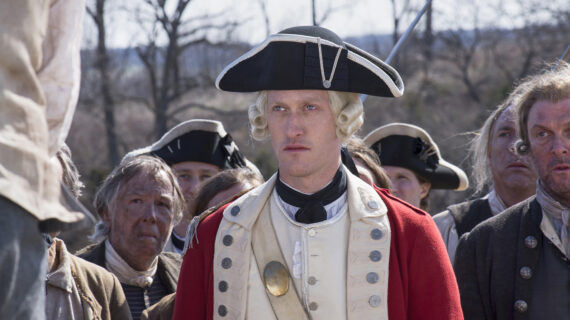

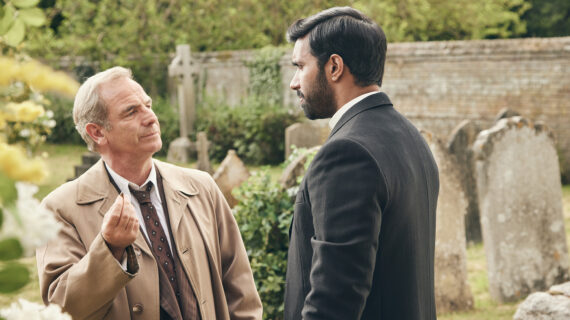


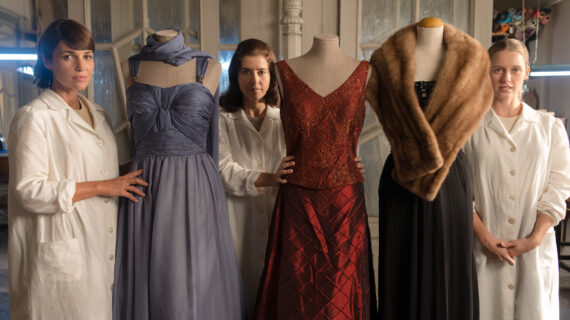
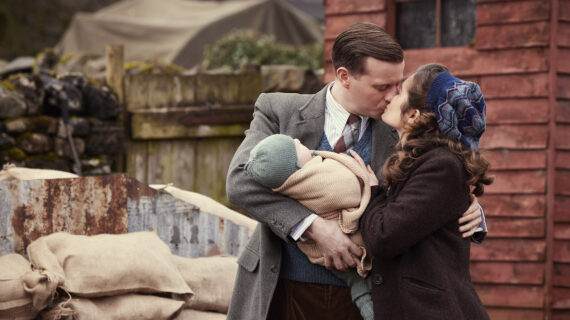
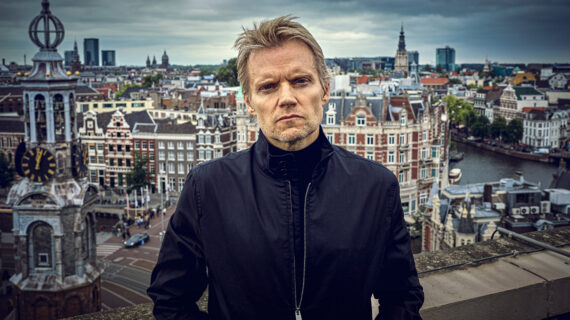


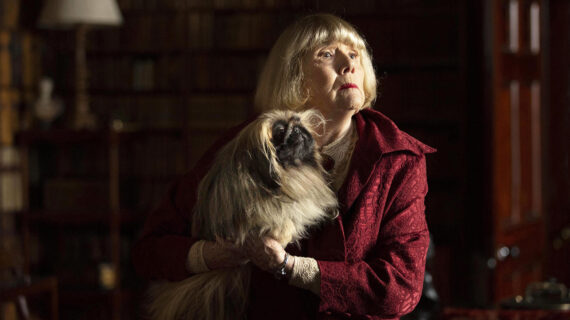

Follow Us